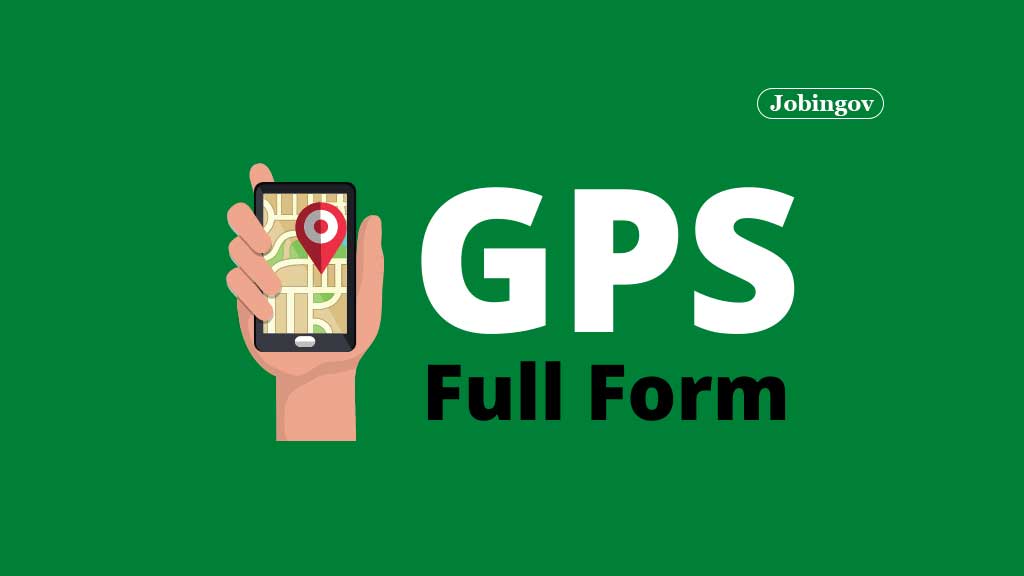What is the full form of GPS?
Global Positioning System is popularly known to us as GPS that help us to track the exact location, velocity, and time 24 hours a day, irrespective of the condition of weather throughout the world of ground users without paying any subscription fees.
Initially, it was developed and designed by the U.S. Department of Defence for soldiers and military in 1960s and later decades in 1980s extended its application for civilians and anyone can be access having GPS facility.
Recently, GPS facility is used in most of the commercial products like smartphones, automobiles, GIS devices, and fitness watches.

The use of GPS has increased in automobile sector to find out vehicle and short and best route to move from one place to another through Airlines, shipping firms, courier companies, drivers, etc.
Different Parts of GPS
Generally, GPS is made up of three distinct part as:
1. Space Segment (GPS satellites): At a height of around 20,000 km from the earth, GPS satellites are placed in six different orbits having four GPS satellite in each orbit which moves around the earth with an interval of 12 hours.
2. Control segment (Ground control stations): To control, monitor, and maintain the satellite orbit ground control stations has very important role and also they ensure that the deviation of timing be within the range of tolerance level.
3. User segment (GPS receivers): This indicates users who uses the navigation signals taken from the GPS satellites and track their position and time.
Working Principle of GPS
- Around 24 satellites are placed for GPS network approx. 19,600 km from the surface of the earth. These satellites revolve around the earth at a speed of 11,200 km/h i.e. it covers complete rotation of the earth in 12 hours. The satellites are deployed in such a way that a clear vision of four satellites can be made throughout the world horizontally.
- Each and every satellite is attached with a computer, radio and an atomic clock. The clock continuously transmits its changing position and time with the help of it orbit.
- Triangulation method is used in GPS system to track one’s location. In this system, GPS system established a link with 3 to 4 satellite that is for working and receiving information. Then any one of the satellite produce a message and transmit it with the user’s location.
- When the receiver will check it on the display of a computer, they can able to see the exact position on it.
- If the facility of a fourth satellite is available, then both altitude as well as the geographical position of a user can be measured.
- With the help of this, one can measure the travel speed and direction with a brief information about your journey.
How Accurate is GPS?
With the help of parallel multi-channel design, recently location can be tracked with much more accuracy. Whenever it turned on, the receiver will be locked with the satellite. This is also useful in dense tree-cover or in urban area having tall buildings.
There are some factors that affects its working functions and some error is found. Garmin GPS receivers is accurate within the range of 10 meters but it is much better in water.
Using WAAS (Wide Area Augmentation System) Garmin GPS become more accurate within the range of 3 meters only by making some correction in atmospheric errors. It will not take any extra charge to get advantage of this satellite.
With the introduction of Differential GPS (DGPS), error has lessened only within the range of 1-3 meters. The U.S. Coast Guard uses the service of DGPS that has a network of service which receive signal in the GPS system and then transmit it as the corrected signal using beacon transmitter.
Factors Affecting GPS Position
There are some atmospheric layers covering earth around it. It affects the signals passing through it. We have mention about that layers how they affect the layers.
1. Ionosphere:
The ionosphere is a part of our atmosphere that consists within the thermosphere and the exosphere. This layer affects the propagation velocity of the GPS signals while passing through it. Generally, it slows down velocity that causes error in the propagation.
2. Troposphere:
The troposphere is in the lowest part of the atmosphere of the earth. Water vapour contains in it causes error in GPS positions.
3. Multipath propagation:
When GPS signals reaches to the surface of the earth, it is reflected by the ground, buildings and other factors and affects the GPS tracking position which is known as multipath propagation.
Applications of GPS
GPS is a very useful and dependable technology for various organizations as well as businesses in many sectors. Application of GPS in our daily life is very important and are used for surveyors, scientists, pilots, boat captains, first responders, and workers in mining and agriculture.
GPS system is used mainly to know five basic parameters such as:
- Location: This system is used to know the exact position of users.
- Navigation: Using this system, we can get to know the safe and suitable route to move from one place to another.
- Tracking: one of the best application of the GPS system is to follow a person or any object’s movement.
- Mapping: It helps to prepare Worlds map.
- Timing: With the help of this system, it is possible to measure time precisely.
More Full Form:
GPS Full Form: FAQs
Q1. What is the full form of GPS?
Ans: The full form of GPS is Global Positioning System.
Q2. What are the main three parts of GPS?
Ans: The main three parts of GPS are Space Segment (GPS satellites), Control segment (Ground control stations), User segment (GPS receivers).
Q3. What are the factors that affects the accuracy of GPS position?
Ans: There are some factors that affect the accuracy of GPS position such as different atmospheric layers slow down the velocity of the GPS signals.
Q4. What are the main application of GPS?
Ans: GPS has a wide range of application and out of them the most essential application is to get location, navigation, tracking, mapping, and timing.
Q5. Can the service of GPS be avail even without internet?
Ans: Yes, it is possible to avail the service of GPS even without the facility of internet whether you have iOS or Android phones.
Conclusion
We hope this post will help you to know the GPS Full Form, different parts, working principle, Application, etc. For get more full form like this visit this website regular basis. Also, you can follow us on Facebook and Twitter to get latest post notification immediately.





